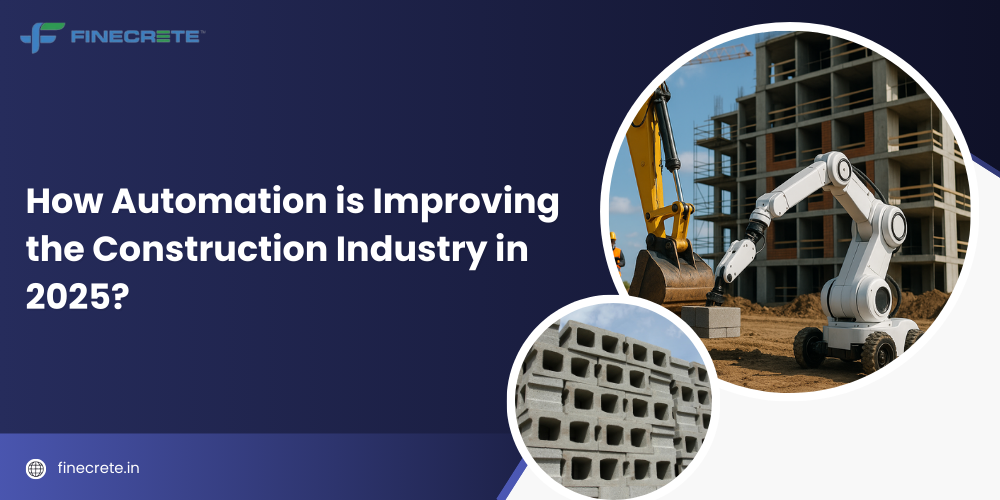The construction industry needs the use of powerful technologies, fresh approach and of course, the best manpower to keep pace with the changing times. After every 10 years, there are changes in style of working, dealing with challenges, communication and more. This is true for almost every industry out there and is the same for the construction sector as well. Automation, which was feared as a ‘job-killer’, is actually improving the construction industry in many ways. Find out how!
Better efficiency
With AI-driven tools, it can be easy to optimize structural, architectural, and subsystem designs. This improves buildability and can reduce the wastage of materials. In AI-enhanced construction management platforms, you can find BIM (Building Information Modeling) being integrated with scheduling and procurement tools. These help to improve communication and coordination.
Better handling of tasks
Today, autonomous machines and robots are being used increasingly, to deal with welding, bricklaying, drywall installation and other labor-intensive tasks. This is helping to free up human workers, and allow them to play more strategic roles. As workflows are getting streamlined and manual processes are getting reduced, there is faster project delivery. There is smooth contractor onboarding and better worker engagement.
Reduced risks
Risks are reduced, workflows are getting optimized and there is now minimal human intervention with bulldozers, excavators, cranes and other autonomous construction vehicles performing tasks easily. AI systems are able to monitor the behavior of workers as well as site conditions on a real-time basis. This helps to prevent accidents and make the work environment much safer. The safety of workers has always been a major problem in the construction industry, and automation seeks to fix that.
Predictive Maintenance
Sensor data can be properly analyzed with the help of AI algorithms. It can predict equipment failures and schedule maintenance proactively. By doing this, it helps to avoid potential hazards and minimizes downtime. Tasks can be performed by robotic systems and autonomous equipment in hazardous environments. This helps to reduce the risks of accidents for human workers. It can also be useful for ensuring the safety of builders themselves, and other stakeholders involved in construction projects.
Improved Sustainability
There is optimal allocation of resources with the use of automation. AI is able to make a proper analysis of the amount of energy that is consumed. It suggests optimizations at the time of operation, which leads to energy-saving and sustainability. Sustainable materials can be identified and chosen with AI-powered tools. These can help to reduce the environmental impact of construction projects. Automation also helps to optimize construction processes and designs. It can help reduce construction debris and material wastes significantly.
In 2025, automation has become big, really big! And it is helping to simplify things in the construction sector, taking the industry forward with a methodical approach. In the last few years, automation technologies have started to make their presence felt in the industry, transforming the way every construction product manufacturer operates. The future looks bright for the use of automation in construction, and it is expected to bring on more benefits in the days to come.






